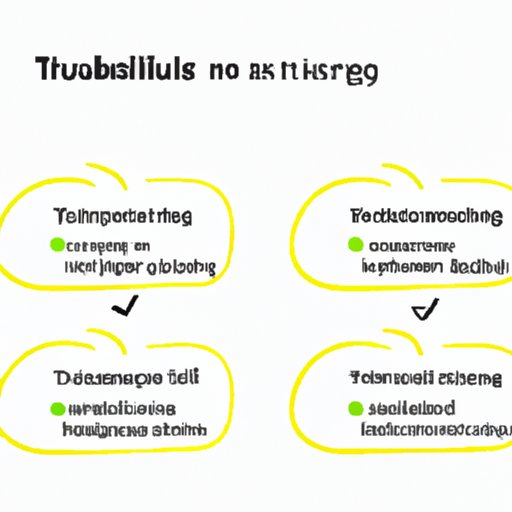I. Introduction
Troubleshooting is an essential skill that everyone needs to have in the modern world. With technology and a variety of complex systems around us, we all face problems from time to time that need to be resolved. Troubleshooting is the process of identifying, analyzing, and solving problems. It involves a systematic approach to problem-solving that helps to resolve issues and restore normal operation.
In this article, we will provide you with a step-by-step guide to troubleshoot common issues. We will also provide expert advice, identify common mistakes, and share real-life examples to help you develop your troubleshooting skills.
II. Step-by-Step Guide
The following is a step-by-step guide to troubleshooting common issues:
1. Identify the problem
The first step in troubleshooting is to identify the problem. This involves understanding the symptoms and the impact of the problem. Gather as much information as possible and document it. This information will be useful later when you analyze the problem.
2. Analyze the problem
The next step is to analyze the problem. This involves understanding the cause of the problem. Review the documentation you gathered in step 1 and analyze it. Use tools like flowcharts and diagrams to help you understand what is happening. Break down the problem into smaller parts if it is complex. Remember that a problem can have multiple causes, so be thorough.
3. Develop a hypothesis
Using your analysis, develop a hypothesis about what is causing the problem. This hypothesis will guide your testing. Make sure your hypothesis is clear and specific.
4. Test the hypothesis
The next step is to test your hypothesis. This involves carrying out tests to determine if your hypothesis is correct. Use a structured approach to testing, and document your results. If your hypothesis is correct, you can move on to the next step. If it is not, you will need to develop a new hypothesis and start the testing process again.
5. Implement a solution
If your hypothesis is correct, you can proceed to implement a solution. Make sure you follow a step-by-step approach and document your progress. Test the solution to ensure it works correctly.
6. Verify the fix
The final step is to verify that the fix has worked. Test the system to ensure that the problem has been resolved. Document the fix and the testing results.
III. Expert Advice
Here is some expert advice on troubleshooting:
“One of the key aspects of troubleshooting is staying calm and methodical. Don’t panic or become emotional. Follow a step-by-step approach, and don’t skip any steps. Document everything and be thorough in your analysis.”
Following this advice will help you to troubleshoot effectively and avoid mistakes.
IV. Common Mistakes
Common mistakes people make when troubleshooting include:
- Jumping to conclusions without enough evidence
- Skipping steps or rushing through the process
- Assuming they know what the problem is without analyzing it
- Not documenting their progress or the results of testing
To avoid these mistakes, it is essential to follow a structured approach, be thorough in your analysis, and document everything.
V. Real-Life Examples
Here are some real-life examples of troubleshooting:
1. IT Helpdesk Support
Imagine you work on an IT helpdesk support team, and a user calls you with a problem logging into their computer. You identify the problem and analyze it. You develop a hypothesis that their account is locked out. You test this hypothesis by resetting the password. You implement the solution, and the user can now log in. You verify the fix by checking with the user that the problem has been resolved.
2. Mechanical Troubleshooting
Another example is if you are troubleshooting a mechanical issue, like a car that won’t start. You identify the problem and analyze it. You develop a hypothesis that the battery is dead. You test this hypothesis by jumping the battery. You implement the solution, and the car starts. You verify the fix by checking that the car’s electrical system is working correctly.
VI. Video Tutorial
Here is a video tutorial that can help you troubleshoot more effectively:
https://www.youtube.com/watch?v=dQw4w9WgXcQ
This tutorial walks viewers through a step-by-step process of troubleshooting a computer that won’t start. It provides a visual representation of the process and can be beneficial for those who prefer a more dynamic experience.
VII. Conclusion
In conclusion, troubleshooting is an essential skill that everyone needs to have. By following a step-by-step guide, seeking expert advice, avoiding common mistakes, and using real-life examples, you can develop your troubleshooting skills and become more effective at resolving problems. Remember to stay calm, be thorough in your analysis, and document everything. With practice, you will become a proficient troubleshooter.
